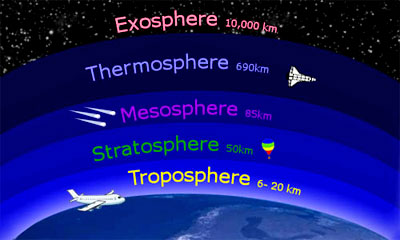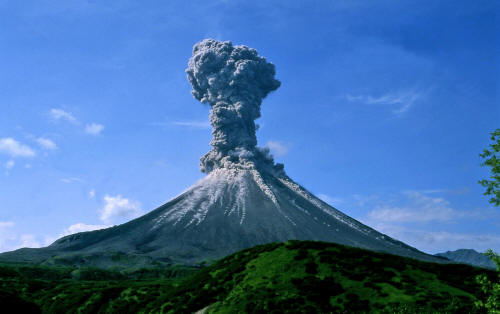|
from MorphCity Website
Geo-engineering is an umbrella term for deliberate climate intervention that includes spraying the sky with aerosols to reflect solar radiation away from Earth in order to cool the planet and to save the environment and humanity from the effects of supposedly man-made global warming.
There is evidence that this program has already been implemented for many years using unidentified chemical aerosols, known as chemtrails.
A geo-engineering/chemtrails experiment using a balloon to spray sulfur particles into the sky to reflect solar radiation back into space is planned for New Mexico within a year by scientist David Keith.
Keith manages a multimillion dollar research fund for Bill Gates.
Gates has also gathered a team of scientist lobbyists that have been asking governments for hand-outs to for their climate manipulation experiments with taxpayer money.
Geo-engineering is touted as a
last-ditch effort to save people and the planet from global warming.
But the truth is that geo-engineering can alter rain cycles leading
to droughts and famine that could result in billions of deaths!
Mount Pinatubo Model for Geo-Engineering Drought, Famine & Death
The Mount Pinatubo volcano in the Philippines erupted in 1991, spewing 22 million tons of sulfur dioxide (SO2) into the upper atmosphere/stratosphere.
A 2008 study from Rutgers University based a model on Mount Pinatubo sulfur dioxide (SO2) emissions and applied it to geo-engineering; the scientists said that they expected overall global cooling, but some regions would experience an increase in greenhouse gases and warming, as was recorded after Pinatubo erupted.
Based on the SO2 volcanic model, the scientists reported that geo-engineering aerosols sprayed in tropical or Arctic regions are likely to disrupt African and Asian/Indian summer monsoons, threatening the food and water supply for billions of people!
Additional negative consequences
include ozone depletion, reduced strength of hydrological cycles
resulting in decreased river flow and soil moisture. While the scientists, led by Alan Robock, who performed the experiments appear to believe in 'man-made' global warming, they do have stern warnings against the dangers of geo-engineering.
2012
Geo-Engineering Study The Max Planck Institute conducted a study of geo-engineering models based on volcanoes, but the study was unrealistic because it used climate models with 400% more carbon dioxide than the pre-industrial era.
However, their results showed that geo-engineering will cause a strong decrease in rainfall (a 15% loss in North America and Eurasia and a 20% decrease in South America).
Overall,
global rainfall would be reduced
by 5%.
Geo-Engineering Can Cause Warming Geo-engineering can actually cause global warming when tampering with clouds in the upper atmosphere/stratosphere.
The Gates-funded scientist
lobbyists propose spraying sulfur dioxide 30 miles above
Earth and the New Mexico experiment proposes spraying 15
miles above surface - both of these fall within the
parameters of the upper atmosphere/stratosphere.
The troposphere is the lowest portion of the Earth's atmosphere, extending an average of 4 to 12 miles above surface.
Clouds that are in the lower troposphere are generally thick white clouds with a high rate of albedo or reflectivity of the sun's rays away from Earth that produce a cooling effect.
However, the experiments are to be conducted above this level in the upper atmosphere/stratosphere.
Both experiments propose
dumping SO2 in the upper atmosphere/stratosphere,
creating a heat-trapping blanket that would
theoretically increase warming. This is the opposite of
Gates' stated goal to cool the planet.
(Note: most
long-distance planes fly at 6 miles above surface, in
the lower atmosphere/troposphere)
What About the EPA?
The EPA is abdicating power
to international interests.
Global Warming and UN Control
Global warming is a hoax
based on manipulated science from the UN's
Intergovernmental Panel on Climate Change. The UN
currently is assuming control over geo-engineering
through its Convention on Biological Diversity
treaty that declared a moratorium on experiments, except
in some
cases.
Geoengineering...Could Disrupt Rainfall PatternsJune 6, 2012from EuropeanGeosciencesUnion Website
Volcanic
eruptions, such as the one of
the Karymsky volcano
(Russia) in
2004,
Tackling climate change by reducing the solar radiation reaching our planet using climate engineering, known also as geoengineering, could result in undesirable effects for the Earth and humankind.
In particular, the work by the team of German, Norwegian, French, and UK scientists shows that disruption of global and regional rainfall patterns is likely in a geoengineered climate.
Geoengineering techniques to reduce the amount of solar radiation reaching the Earth’s surface range from mimicking the effects of large volcanic eruptions by releasing sulphur dioxide into the atmosphere to deploying giant mirrors in space.
Scientists have proposed
these sunlight-reflecting solutions as last-ditch
attempts to halt global warming.
This hypothetical scenario assumes a world with a CO2 concentration that is four times higher than preindustrial levels, but where the extra heat caused by such an increase is balanced by a reduction of radiation we receive from the Sun.
Under the scenario studied, rainfall strongly decreases - by about 15 percent (some 100 millimeters of rain per year) of preindustrial precipitation values - in large areas of North America and northern Eurasia.
Over central South America, all models show a decrease in rainfall that reaches more than 20 percent in parts of the Amazon region. Other tropical regions see similar changes, both negative and positive.
Overall, global rainfall is reduced by about five percent on average in all four models studied.
The authors note that the scenario studied is not intended to be realistic for a potential future application of climate engineering.
But the experiment allows the researchers to clearly identify and compare basic responses of the Earth’s climate to geoengineering, laying the groundwork for more detailed future studies.
The scientists used climate models developed by,
Norwegian scientists developed the fourth Earth model used.
Information for editors
This research is presented
in the paper ‘Solar
irradiance reduction to counteract radiative forcing
from a quadrupling of CO2 - Climate responses simulated
by four Earth system models’ to appear in the
EGU Open Access journal Earth System Dynamics on
06 June 2012.
The European Geosciences Union (EGU) is Europe’s premier geosciences union, dedicated to the pursuit of excellence in the Earth, planetary, and space sciences for the benefit of humanity, worldwide. It is a non-profit interdisciplinary learned association of scientists founded in 2002.
The EGU has a current portfolio of 14 diverse scientific journals, which use an innovative open-access format, and organizes a number of topical meetings, and education and outreach activities.
Its annual General Assembly is the largest and most prominent European geosciences event, attracting over 10,000 scientists from all over the world.
The meeting’s sessions cover
a wide range of topics, including volcanology, planetary
exploration, the Earth’s internal structure and
atmosphere, climate change, and renewable energies.
Contacts
|



